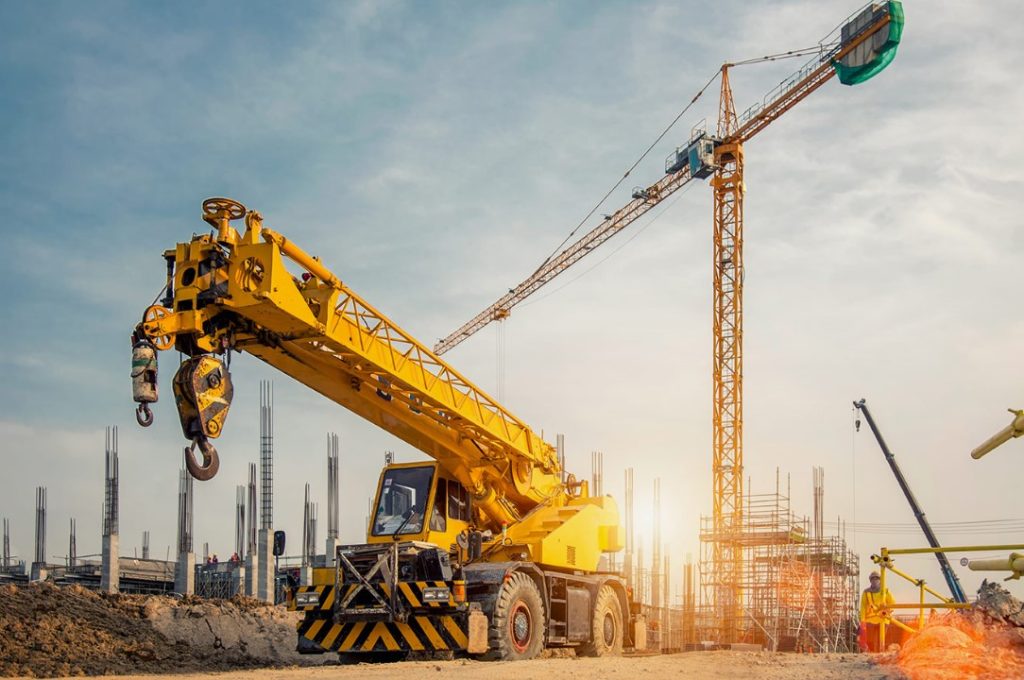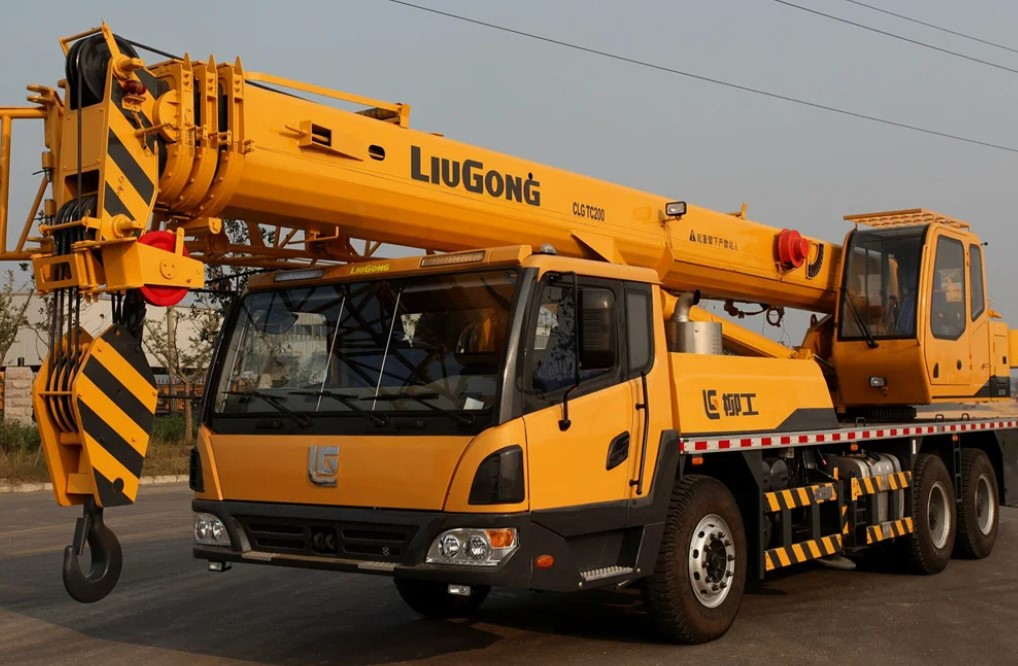Crawler cranes are essential in the construction industry, particularly for large-scale projects requiring heavy lifting. Companies in Dubai and the broader UAE region often face the decision of whether to rent or purchase these machines. This article delves into the economic considerations of both options, providing a comprehensive analysis to aid businesses in making an informed choice.
Initial Capital Outlay
One of the primary economic factors in the decision-making process is the initial capital outlay. Purchasing a crawler crane requires a substantial upfront investment. Depending on the crane’s size, capacity, and technology, costs can range from hundreds of thousands to millions of dollars. This significant expenditure can strain a company’s finances, especially for smaller firms or those with limited capital reserves.
In contrast, renting a crawler crane involves a much lower initial cost. Rental agreements typically include a security deposit and the first month’s rental fee, which is considerably less than the purchase price. This lower barrier to entry allows companies to allocate their financial resources more effectively, investing in other critical areas such as workforce development or additional equipment.
Maintenance and Repair Costs
Another critical factor is the cost of maintenance and repair. Assuming complete responsibility for the maintenance of a crawler crane is a prerequisite for its ownership. In order to guarantee that the machine functions safely and efficiently, it is imperative to conduct routine maintenance. This encompasses the replacement of parts, routine inspections, and the resolution of any mechanical issues that may arise. The total cost of ownership can be substantially influenced by the accumulation of these costs over time.
Maintenance and repair expenses are typically covered by the rental company when renting a crawler crane. This arrangement can result in significant cost reductions for companies, as they do not need to allocate resources toward specialized maintenance teams or spare parts. Additionally, rental agreements frequently include access to newer models, which are less likely to necessitate extensive repairs, thereby reducing downtime and improving project efficiency.

Utilization Rate
The utilization rate of the crawler crane plays a vital role in determining whether it is more cost-effective to rent or purchase. It is important for companies to evaluate the frequency at which they will utilize the crane. For businesses engaged in ongoing or extended projects, opting to make a purchase can often be a more cost-effective choice. The higher utilization rate makes it worth the initial investment and ongoing maintenance costs.
However, for companies that have sporadic or short-term projects, renting is often a more cost-effective option. Renting enables companies to adjust their equipment requirements based on project demands, without bearing the complete burden of ownership expenses. In the ever-changing construction market of Dubai and the UAE, having flexibility is incredibly advantageous. With project timelines and requirements constantly shifting, being able to adapt quickly is key.
Depreciation and Resale Value
Depreciation is an unavoidable aspect of owning a crawler crane. As with any heavy machinery, crawler cranes lose value over time due to wear and tear, technological advancements, and market conditions. Depreciation reduces the asset’s resale value, which can be significant for companies looking to recoup some of their initial investment.
Renting a crawler crane eliminates concerns about depreciation and resale value. Companies can focus on project completion without worrying about the machine’s declining value. This aspect is particularly advantageous in the UAE, where rapid technological advancements can render older equipment obsolete more quickly.
Tax Implications
Tax implications also play a role in the decision to rent or purchase a crawler crane. In many jurisdictions, including the UAE, purchasing equipment can offer tax benefits. Businesses can often deduct depreciation and interest expenses, reducing their taxable income. However, these benefits must be weighed against the substantial initial investment and ongoing costs.
On the other hand, renting equipment may not offer the same tax advantages but provides financial flexibility. Rental payments are typically considered operational expenses, which are fully deductible in the year they are incurred. This immediate tax benefit can improve cash flow and financial stability, especially for smaller firms or those with fluctuating project demands.

Technological Advancements
The pace of technological advancement in the construction industry is rapid. Newer crawler crane models often feature enhanced capabilities, improved safety features, and greater efficiency. Owning a crane means committing to a specific model for several years, potentially missing out on the benefits of newer technology.
Renting allows companies to access the latest models without the financial commitment of purchasing. Rental companies frequently update their fleets, ensuring that clients have access to state-of-the-art equipment. This advantage is particularly relevant in Dubai and the UAE, where cutting-edge technology can provide a competitive edge in the market.
Project-Specific Needs
Different construction projects have unique requirements. The size, capacity, and capabilities of the crawler crane needed can vary significantly from one project to another. Purchasing a crane locks a company into a specific model, which may not be suitable for all projects. This limitation can lead to inefficiencies and increased costs if additional equipment needs to be rented or purchased.
Renting offers the flexibility to select the most appropriate crane for each project. Companies can tailor their equipment choices to meet specific project demands, optimizing efficiency and cost-effectiveness. This flexibility is crucial in the UAE, where diverse construction projects, ranging from skyscrapers to infrastructure developments, require specialized equipment.
Availability and Lead Time
Availability and lead time are important logistical considerations. Purchasing a crawler crane involves a significant lead time, from selecting the model and negotiating the purchase to delivery and setup. This process can delay project timelines, particularly if the crane is needed immediately.
Rental companies typically have a fleet of cranes ready for immediate deployment. This quick availability can accelerate project start times and reduce delays. In the fast-paced construction environment of Dubai and the UAE, minimizing lead times is essential for meeting tight project deadlines and maintaining competitiveness.
Financial Flexibility
Financial flexibility is a critical aspect of the rent versus purchase decision. Purchasing a crawler crane ties up a significant portion of a company’s capital, reducing financial flexibility. This can limit a firm’s ability to respond to new opportunities, invest in other areas, or manage unexpected expenses.
Renting preserves capital and enhances financial flexibility. Companies can allocate their financial resources more strategically, responding to market changes and seizing new opportunities without the constraints of a substantial capital investment. This flexibility is particularly valuable in the dynamic construction market of the UAE, where agility and responsiveness are key to success.
Risk Management
Risk management is another important consideration. Owning a crawler crane involves various risks, including mechanical failure, accidents, and market fluctuations. These risks can result in unexpected costs and operational disruptions.
Renting mitigates many of these risks. The rental company assumes responsibility for maintenance, repairs, and ensuring the equipment meets safety standards. Additionally, rental agreements often include insurance coverage, further reducing the financial impact of potential risks. This risk mitigation is especially beneficial in the UAE, where construction projects must adhere to strict safety and regulatory standards.
Market Conditions
Market conditions play a significant role in the decision to rent or purchase a crawler crane. In a booming construction market, demand for equipment increases, driving up purchase prices and lead times. Conversely, during market downturns, equipment prices may drop, but the risk of asset underutilization rises.
Renting provides a buffer against market fluctuations. Companies can adjust their equipment needs based on current market conditions without the long-term commitment of ownership. This flexibility allows firms to navigate the cyclical nature of the construction market in Dubai and the UAE more effectively.
Cost Analysis
Conducting a detailed cost analysis is essential to making an informed decision. Companies should compare the total cost of ownership, including purchase price, maintenance, repairs, depreciation, and resale value, against the total rental cost over the expected project duration. This analysis should also consider indirect costs such as lead time, downtime, and financial flexibility.
In many cases, renting proves to be more cost-effective, especially for companies with variable project demands or limited capital. However, for firms with continuous, long-term projects, purchasing may offer greater economic benefits. The key is to conduct a thorough, project-specific analysis to determine the most economical option.
Conclusion
The decision to rent or purchase a crawler crane involves multiple economic factors, each with its own implications. Companies in Dubai and the UAE must carefully consider initial capital outlay, maintenance and repair costs, utilization rate, depreciation, tax implications, technological advancements, project-specific needs, availability, financial flexibility, risk management, and market conditions.
For many businesses, crawler crane rental offers significant advantages, including lower initial costs, reduced maintenance responsibilities, access to the latest technology, and greater financial flexibility. However, for firms with long-term, continuous projects, purchasing may provide better economic value. A detailed cost analysis, tailored to the specific needs and circumstances of the company and its projects, is essential for making an informed decision.

I am an accomplished coder and programmer, and I enjoy using my skills to contribute to the exciting technological advances that happen every day.
